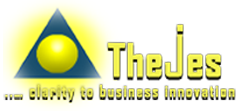-
- Internal (Detailed) Design
- Construction & Unit Testing
- Code Integration & Testing
- Develop Test Cases, Test Data & Test Environment Set-up
It is during the Development phase (also sometimes referred to as Construction) that the actual coding and development of the business application will take place. The development phase generally starts with Internal Design (a more detailed design) based on the pervious External Design Document (EDD). Then we will proceed to Coding / Programming the application according to the technical design specifications.
Unit Testing is carried out as each individual coding component or unit of source code is completed to ensure it is working according to design specification. In procedural programming a unit may be an individual program, function, procedure, web page, menu etc, while in object-oriented programming, the smallest unit is always a Class; which may be a base/super class, abstract class or derived/child class.
Once all the required individual coding modules are completed, Code Integration activities will tale place, including some quick testing to ensure the code integration is working fine. Close to the completion of all coding activities, Code Review will take place (by peer developers, or facilitated by a technical lead) to ensure that the developed code adheres to required coding standards and best practices.
This phase will also see development of Test Scenarios and detailed Test Cases based on the Test Plan. Required Test Data will also be created, and the Test Environments will be setup in preparation to commence formal Software Quality Assurance (SQA) Testing activities. The close of this phase is signified by the completion of all development activities, and the application is ready to be passed on to the SQA team to commence testing.


